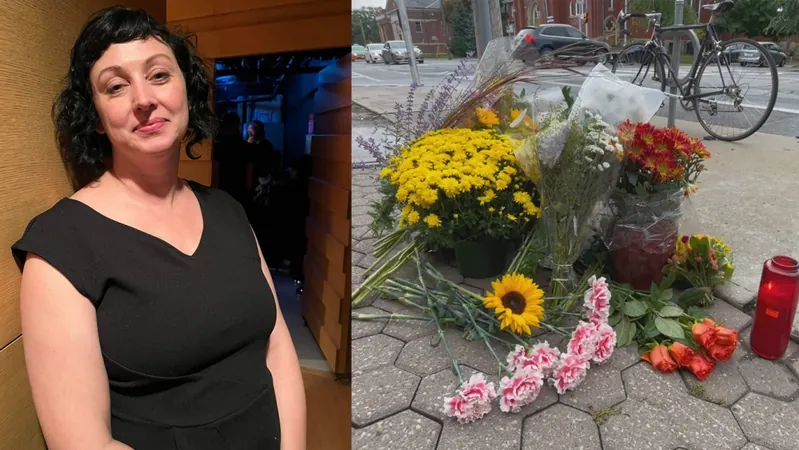
The Hidden Dangers of Non-Surgical BBL: A Cautionary Tale
2024-09-27
Cairo Nakhate-Chirwa decided to undergo a non-surgical Brazilian butt-lift (BBL) in June, seeking a curvier figure to fit into the expectations of her hip-hop community. Although she is content with the aesthetic results, she expresses deep regret after discovering the unregulated nature of the procedure and the latent risks involved.
The alarm has been sounded following the tragic death of Alice Webb, who reportedly underwent a similar procedure. With increasing apprehension surrounding these treatments, the UK has come under fire for its lack of regulations, prompting experts to label the situation as the “wild west” of cosmetic procedures.
A non-surgical BBL typically involves the injection of fillers, designed to enhance the size and shape of the buttocks without surgery. However, this procedure remains unregulated in the UK, making it all the more crucial for potential patients to conduct thorough research before proceeding.
Cairo stumbled upon her provider through Instagram, where she was enticed by an offer of £1,200 for the treatment. In a mere 24 hours, she found herself at a London apartment, trusting the practitioner without verifying their qualifications. “When they’re advertising themselves, you just assume they are qualified," Cairo explained.
The ramifications of such assumptions can be dire. Post-procedure, Cairo noted minor side effects such as pain and leaking from the injection site. However, it wasn’t until she learned about Alice Webb's death that she investigated the inherent risks of non-surgical BBLs. Now, despite being satisfied with her body, Cairo insists, "I regret not doing my research beforehand."
Behind the allure of a non-surgical BBL lies a disturbing reality. These procedures are often performed under local anaesthesia in non-clinical settings like apartments or even hotel rooms, raising questions about the safety and sterility of such environments. An alarming study by Save Face revealed that many patients are unaware of the substances being injected into their bodies. Common fillers include hyaluronic acid and PLLA (Poly-L-lactic acid), yet no concrete regulations govern their use.
NHS England has openly discouraged the non-surgical BBL, stating it poses unregulated risks. Conversely, surgical BBLs, although risky due to their high complication rates and previous concerns over fatal outcomes, are conducted under strict surgical standards including the use of general anaesthesia and sterile operating theatres.
Mr. Marc Pacifico, representing the British Association of Aesthetic Plastic Surgeons, contends that the UK’s regulatory environment lapses create a dangerous landscape for those seeking cosmetic enhancements. Contrarily, in many European nations, fillers are classified as medical products, necessitating prescriptions and better oversight.
Dr. Sophie Shotter, a well-known figure in the aesthetic medicine community, stresses that many individuals remain oblivious to the dangers associated with liquid BBLs. Complications can include serious blockages in blood vessels leading to potentially fatal pulmonary embolisms, alongside infection risks, scarring, and severe reactions to anaesthetics.
Moreover, experts lament the slow regulatory response to the evolving cosmetic landscape, attributing this stagnation to societal biases and an underestimation of the risks tied to these aesthetics—traditionally perceived as "women’s issues."
Cairo’s experience is exacerbated by societal pressures to conform to a particular body image, particularly prevalent within the hip-hop industry where curves are often glamorized. She noted her previous attempts to achieve her desired figure naturally were thwarted by a lack of body fat viable for surgical options.
Professor Elizabeth Daniels from the Centre for Appearance Research highlights the critical need to address the deep-seated societal factors contributing to the rising popularity of such procedures. It’s essential to tackle the broader picture—looking beyond individual choices and considering the systemic pressures that inform them.
As Cairo reflects on her decision, she urges others to take heed before stepping into this "wild west" of cosmetic enhancements. In an era where beauty often comes with a price, understanding the risks is paramount for anyone contemplating these life-altering procedures. Her story serves as a stark reminder of the importance of thorough research and caution in the unregulated realm of cosmetic surgery.









 Brasil (PT)
Brasil (PT)
 Canada (EN)
Canada (EN)
 Chile (ES)
Chile (ES)
 España (ES)
España (ES)
 France (FR)
France (FR)
 Hong Kong (EN)
Hong Kong (EN)
 Italia (IT)
Italia (IT)
 日本 (JA)
日本 (JA)
 Magyarország (HU)
Magyarország (HU)
 Norge (NO)
Norge (NO)
 Polska (PL)
Polska (PL)
 Schweiz (DE)
Schweiz (DE)
 Singapore (EN)
Singapore (EN)
 Sverige (SV)
Sverige (SV)
 Suomi (FI)
Suomi (FI)
 Türkiye (TR)
Türkiye (TR)